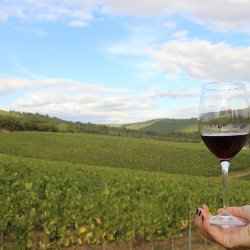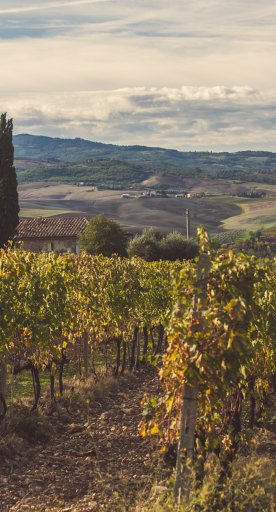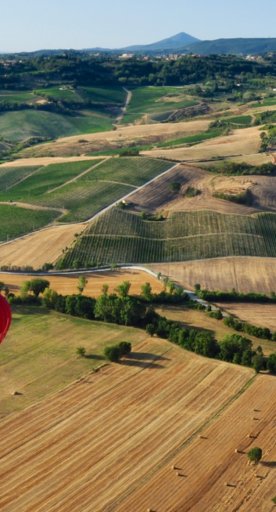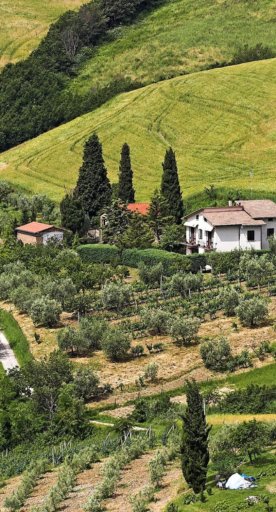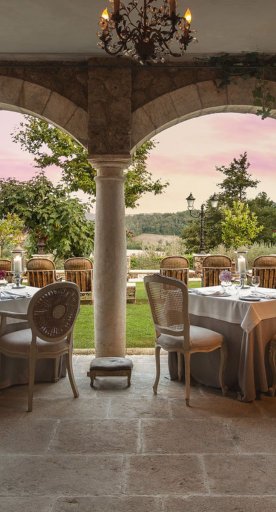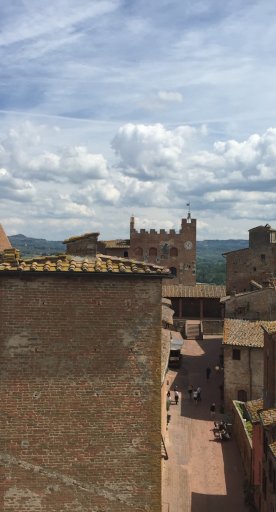

The Gallo Nero (Black Rooster), symbol of Chianti between history and legend
Chianti Classico is one of the best-known wines in the world, represented by the famous Gallo Nero. The history of this symbol has its roots in the Middle Ages and in a curious legend.
Long, orderly stretches of rows of vines draw the profile of Chianti, an ancient territory nestled among the hills separating Siena and Florence, where some of the world's most renowned wines ripen. Prominent among them is the Chianti Classico, represented by the well-known Gallo Nero brand. The history of this symbol is curious, and it has become a legend rooted in a bloody past.
-
1.The legend of the Gallo Nero
-
2.The story behind the myth
-
3.Wines of excellence and ancient paths
The legend of the Gallo Nero

There was a time when the Chianti landscapes were the scene of long and bloody battles, which saw the troops of Siena and Florence face each other in a succession of violent clashes for territorial dominance. In an attempt to put a stop to the endless contention, the rival cities decided to take an unusual diplomatic solution. It was agreed that two knights, representing the two factions, would set out from their respective towns at cockcrow, to establish the territorial boundaries at the exact spot where they met. The strategies adopted were diametrically opposed: Siena chose a white rooster, which it stuffed to the full the night before the challenge, so that by morning it would be full of energy; in contrast, Florence took a black cockerel, which was left to fast for a long time.
It so happened that on the given day the Florentine cockerel, nervous from hunger, began to crow well before sunrise, and the lily knight set off well in advance of his rival from Siena. The two met only 12 miles from the city of Siena (at Fonterutoli, near Castellina in Chianti) where peace was made and the boundaries of their respective domains were defined once and for all.
The story behind the myth
Although that of the Gallo Nero is only a legend, numerous historical attestations link this animal to the Chianti territory since the 14th century. It is known for certain, in fact, that the Gallo Nero was the symbol of the League of Chianti, one of the many political-military alliances established by Florence to ensure greater widespread control over the territory, and which brought together the villages of Castellina in Chianti, Radda in Chianti and Gaiole in Chianti.
Sealing the identity role of the Gallo Nero, however, was the Allegory of Chianti, a 16th-century fresco by Giorgio Vasari painted on the ceiling of the Salone dei Cinquecento, the marvelous hall of the Palazzo Vecchio in Florence.
A few more centuries had to pass before the Gallo Nero was associated with wine production, becoming the emblem of the Chianti Classico. A first, very important turning point occurred at the beginning of the 18th century, and in particular in 1716, when a decree by Cosimo III de' Medici accurately defined the geographical area of the Chianti wine production. However, it was not until 1924 that the Gallo Nero was chosen as the symbol of this wine excellence, when it was taken as a trademark by the newly formed Consorzio del Vino Chianti Classico (Chianti Classico Wine Consortium), a supervisory and promotion body that has aimed to protect its production ever since.
A further decree a few years later defined the Chianti Classico production area even more precisely, and it has remained unchanged ever since.
Wines of excellence and ancient paths

Between history and legend, it is certain that the Chianti wine and its Gallo Nero have had a steady rise since the dawn of their history, coming to embody the identity of an area where vast vineyards and fascinating tows fo vines herald each year the arrival of a new vintage of flavor. Among these views, where the grapes ripen in the sun and the countryside stretches out, the Via Romea Sanese meanders placidly, centuries-old evidence of the ancient roads that, regardless of any dispute, united the cities of Siena and Florence.


